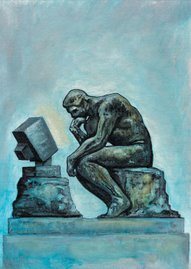Premise and Conclusion – The terms premise and conclusion denote a function. Thus no proposition taken by itself can be a premise or a conclusion. They are such only within the context of an argument. An argument may be diagrammed simply as follows:
What serves as the evidence what is supposed to follow from the evidence
All human are mammals.
Therefore, all humans feed their young with milk.
All humans feed their young with milk.
Therefore all humans are mammals.
There are clues one can use to pick out the conclusions and the premises of an argument. Certain words in our language may be used to signal conclusions or premises. They are called indicators.
| PREMISE INDICATORS | CONCLUSION INDICATORS | ||
| Since, as indicated by, because, for, in that, may be inferred from, as, seeing that, for the reason that, inasmuch as, given that, may be concluded from, or the reason that, due to the fact that | Therefore, wherefore, accordingly, we may conclude, entails that, hence, thus, consequently, we may infer that, it must be that, whence, so, it follows that, implies that | ||
| Premise | Shows that Indicates that Proves that Entails that Implies that Establishes that | Conclusion | |
| Conclusion | Is shown by Is indicated by Is proven by Is entailed by Is implied by Is established by | Premise | |
| The president, being human, is mortal, as all human beings are mortal. | |
| Premise 1 Premise 2 ----------- Conclusion | All human beings are mortals. The president is a human being. -------------------------------------- Therefore, the president is mortal. |
| God does not exist because if he did there would be no suffering and evil in the world; but obviously suffering and evil do exist. Thus, there is not God. | |
| Premise 1 Premise 2 ------------ Conclusion | If God existed there would be no suffering and evil in the world. But obviously suffering and evil do exist. --------------------------------------------------------------------------- Therefore, there is no God |

Nuk ka komente:
Posto një koment